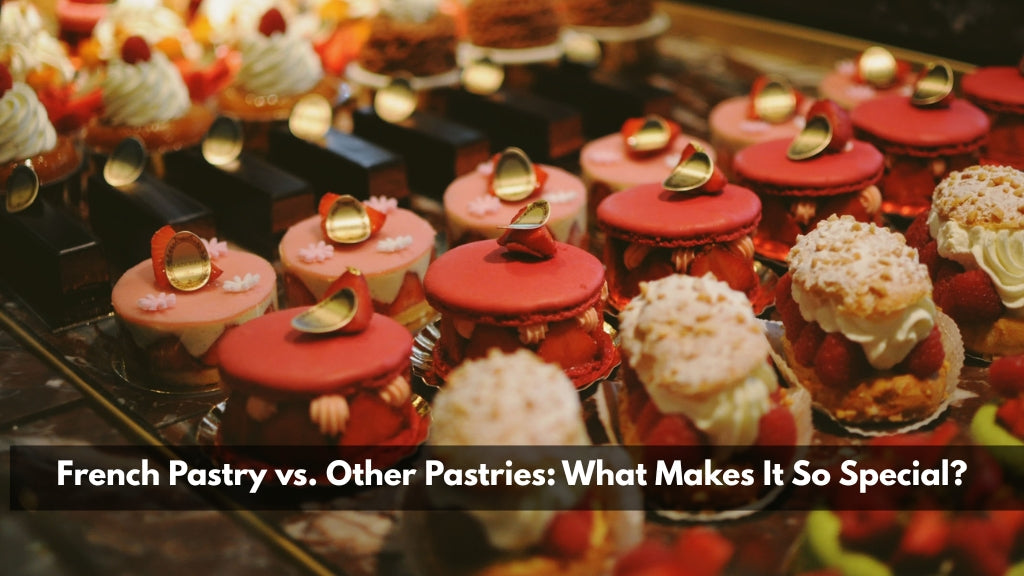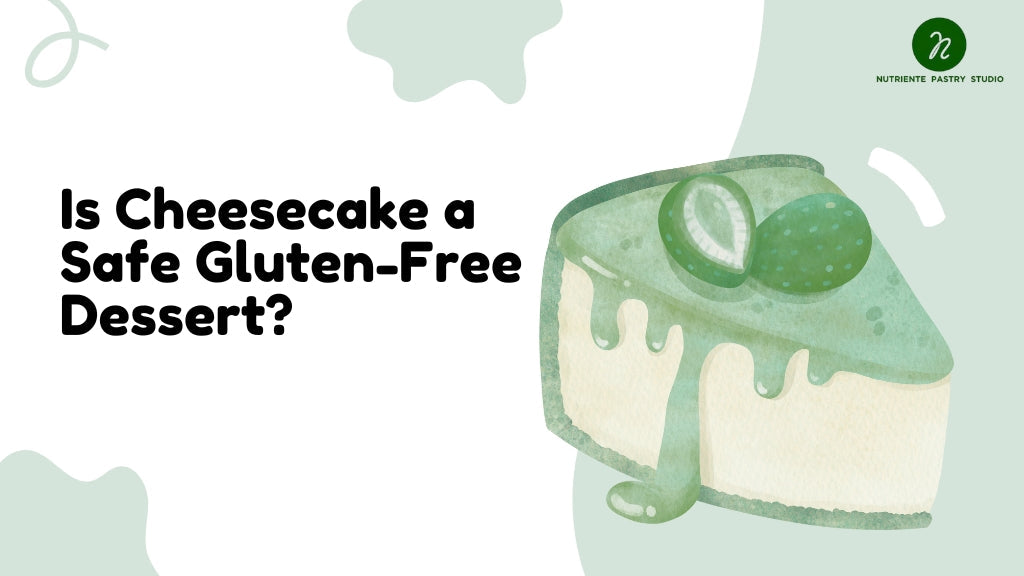
What are the 9 common desserts?

What are the 9 common desserts?
Desserts. The very word conjures images of sugary delights, creamy textures, and the satisfying culmination of a meal. They are more than just the final course; they are celebrations, comfort, and a universal language of indulgence. From humble home-baked treats to elaborate patisserie creations, desserts hold a special place in almost every culture across the globe. But amidst the myriad of sweet temptations, some desserts stand out as truly iconic, transcending geographical boundaries and becoming beloved staples on tables worldwide.
While regional variations and personal preferences undoubtedly play a role, there exists a core group of desserts that consistently appear on menus, in cookbooks, and in our collective sweet dreams. These are the classics, the comfort foods, the crowd-pleasers that have earned their stripes as universally common desserts. Let’s embark on a delectable journey to explore nine of these iconic sweet treats, delving into their characteristics, origins, and why they continue to captivate our taste buds.
1. The Timeless Comfort: Cake
No list of common desserts would be complete without the undisputed king (or queen!) of celebrations: cake. From birthdays and weddings to casual afternoon tea, cake is the centerpiece of countless joyful occasions. But what makes cake so universally appealing? It's the sheer versatility. Cake is not a single entity; it's a vast category encompassing countless flavors, textures, and forms.
Think of the dense, fudgy richness of chocolate cake, often adorned with creamy frosting and decadent ganache. Picture the light and airy sponge cake, delicately flavored with vanilla or citrus, perfect for layering with fresh fruit and whipped cream. Consider the moist and spiced carrot cake, speckled with nuts and crowned with tangy cream cheese frosting. From simple sheet cakes baked in a single pan to elaborate tiered creations, the possibilities are endless.
The fundamental components of cake – flour, sugar, eggs, and fat – are readily available and adaptable to diverse ingredients and techniques. This adaptability has allowed cake to evolve across cultures, incorporating local flavors and culinary traditions. Whether it's the Italian panettone, the German Black Forest gateau, or the American red velvet cake, each region boasts its unique and cherished cake variations.
The enduring appeal of cake lies not only in its delicious taste and varied textures but also in its inherent symbolic value. It represents celebration, togetherness, and the sharing of joy. A slice of cake is more than just a sweet treat; it’s a piece of happiness, readily shared and enjoyed across generations.
2. The Humble Yet Heavenly: Cookies
If cake is the king of celebrations, then cookies are the everyday heroes of the dessert world. Small, portable, and endlessly versatile, cookies are the perfect sweet treat for a quick snack, a lunchbox delight, or a comforting evening indulgence. Their charm lies in their simplicity and their ability to be customized in countless ways.
From the crisp snap of a classic chocolate chip cookie to the chewy goodness of oatmeal raisin, cookies offer a diverse range of textures and flavors. Consider the buttery crumble of shortbread, the spiced warmth of gingerbread cookies, or the delicate almond flavor of biscotti. The base recipe of butter, sugar, and flour provides a blank canvas for endless creativity.
Across cultures, cookies take on different forms and flavors. Think of the delicate French macarons, the spiced Dutch speculaas, or the buttery Scottish shortbread. Each variation reflects local ingredients and culinary traditions, yet the fundamental appeal of a small, sweet, baked treat remains universal.
Cookies are not just delicious; they are also inherently comforting and nostalgic. The smell of freshly baked cookies wafting through the kitchen evokes feelings of home, warmth, and simple pleasures. They are often associated with childhood, holidays, and moments of shared joy. A warm cookie and a glass of milk remains a quintessential comfort food combination, beloved by people of all ages across the globe.
3. The Creamy Dream: Ice Cream
When the weather warms up, or even when it doesn’t, ice cream steps into the spotlight as a truly global dessert sensation. This frozen delight, crafted from cream, sugar, and flavorings, offers a refreshing and indulgent experience that transcends seasons and cultures. Its popularity is undeniable, evidenced by the countless ice cream parlors, grocery store freezers overflowing with pints, and the universal love for this creamy treat.
Ice cream’s appeal lies in its texture and temperature. The cold, smooth creaminess provides a delightful contrast to the warmth of our bodies and a soothing sensation on the palate. But beyond its refreshing nature, ice cream is also a vehicle for an extraordinary array of flavors.
From classic vanilla and chocolate to exotic fruit sorbets and inventive gourmet combinations, ice cream flavors are limited only by imagination. Consider the rich decadence of chocolate fudge brownie ice cream, the refreshing tang of strawberry sorbet, or the sophisticated complexity of salted caramel swirl. Regional variations also abound, from Italian gelato with its denser texture to Turkish dondurma known for its stretchy consistency.
Ice cream is more than just a dessert; it’s an experience. The ritual of scooping, the anticipation of the first spoonful, the melting sensation on the tongue – these all contribute to the unique pleasure of enjoying ice cream. Whether enjoyed in a cone, a cup, or as part of a sundae, ice cream offers a moment of pure, unadulterated indulgence, readily accessible and enjoyed across the world.
4. The Fruity Finale: Fruit-Based Desserts
In a world increasingly conscious of health and wellness, fruit-based desserts offer a naturally sweet and refreshing alternative to richer, heavier options. While often overlooked in favor of more decadent treats, fruit desserts are undeniably common and hold a significant place in global culinary traditions. They showcase the natural sweetness and vibrant flavors of fruits, transforming them into satisfying and guilt-free indulgences.
The versatility of fruit desserts is remarkable. Think of the simple elegance of a fruit salad, showcasing a medley of seasonal fruits in their natural glory. Consider the warm comfort of apple crumble or cobbler, where baked fruit is topped with a buttery, crumbly topping. Picture the refreshing delight of fruit sorbets and granitas, capturing the pure essence of fruit flavors in a frozen form.
Across cultures, fruit desserts take on diverse forms. From the delicate French clafoutis, featuring baked fruit in a custard-like batter, to the vibrant Filipino halo-halo, a shaved ice dessert laden with fruits, beans, and jellies, fruit desserts showcase regional specialties and culinary ingenuity.
Fruit-based desserts are not only delicious and refreshing, but they also offer nutritional benefits. Fruits are packed with vitamins, minerals, and fiber, making fruit desserts a relatively healthier way to satisfy sweet cravings. They represent a lighter, more wholesome approach to dessert, appealing to those seeking balance and natural flavors in their sweet indulgences.
5. The Golden Delight: Pie
Pie, with its flaky crust and flavorful filling, is an American icon that has transcended borders to become a globally recognized and loved dessert. From sweet fruit pies to creamy custard pies, and even savory pies enjoyed as meals, pie's versatility and comforting nature have cemented its place as a common dessert worldwide.
The magic of pie lies in the contrast between its buttery, crisp crust and its soft, flavorful filling. Whether it’s the classic apple pie with its spiced apple filling, the tangy lemon meringue pie with its fluffy topping, or the rich pecan pie with its nutty sweetness, each pie variation offers a unique and satisfying experience.
While pie is often associated with American cuisine, variations exist across cultures. Think of the British mince pie, filled with dried fruits and spices, or the Australian meat pie, a savory staple often enjoyed as a meal. The fundamental concept of encasing a flavorful filling in a baked crust remains consistent, albeit with regional adaptations and flavor preferences.
Pie is more than just a dessert; it's often associated with home, tradition, and comfort. The aroma of baking pie fills the kitchen with warmth and nostalgia, evoking memories of family gatherings and holiday celebrations. It's a dessert that is often made from scratch, representing care, effort, and a desire to share homemade goodness. A slice of pie is a slice of home, a slice of comfort, enjoyed and appreciated across cultures.
6. The Elegant Indulgence: Cheesecake
Cheesecake, with its rich, creamy texture and tangy flavor, stands apart as a sophisticated and decadent dessert that has gained immense popularity worldwide. While its origins are debated, cheesecake in its modern form has become a staple in cafes, restaurants, and home kitchens across the globe, representing a luxurious and undeniably satisfying sweet treat.
The defining characteristic of cheesecake is its creamy, dense texture, achieved through a base of cream cheese, eggs, and sugar. This rich foundation is then often flavored and embellished in countless ways. From classic New York cheesecake with its simple vanilla bean flavor to elaborate variations incorporating chocolate, fruit, caramel, or spices, cheesecake offers a diverse range of flavor profiles.
While often associated with American cuisine, cheesecake has roots in ancient Greece and has evolved across cultures. Think of the Italian ricotta cheesecake, the German käsekuchen, or the Japanese soufflé cheesecake, each offering unique textures and flavor nuances.
Cheesecake is perceived as an elegant and indulgent dessert, often enjoyed on special occasions or as a treat at a nice restaurant. Its richness and complexity make it a satisfying and memorable dessert experience. Whether enjoyed plain, topped with fruit, or drizzled with sauce, cheesecake is a testament to the power of creamy textures and tangy flavors in creating a universally loved dessert.
7. The Silky Smooth: Pudding and Custard
Puddings and custards, often used interchangeably, represent a category of desserts characterized by their smooth, creamy, and often delicate textures. From simple vanilla pudding to elaborate crème brûlée, these desserts offer a comforting and elegant sweetness that has been cherished across cultures for centuries.
The magic of puddings and custards lies in their texture. Achieved through the careful combination of milk or cream, eggs, and sugar, and often thickened with starch or gelatin, these desserts offer a silky smooth mouthfeel that is both comforting and luxurious. Flavorings can range from simple vanilla and chocolate to more complex spices, fruits, or coffee.
Across cultures, puddings and custards take on diverse forms. Think of the British bread pudding, the French crème caramel, the Spanish flan, or the Indian kheer (rice pudding). Each variation reflects local ingredients and culinary traditions, showcasing the versatility of this category of desserts.
Puddings and custards are often associated with comfort, simplicity, and elegance. They can be enjoyed warm or cold, plain or adorned with toppings, offering a versatile dessert option for various occasions. From humble homemade puddings to sophisticated restaurant custards, these desserts represent a timeless and universally appealing category of sweet treats.
8. The Chocolate Obsession: Chocolate Brownies
Chocolate brownies, those fudgy, chewy squares of chocolatey goodness, have become a global phenomenon, representing the ultimate chocolate indulgence in a handheld, portable form. Their popularity stems from their intense chocolate flavor, satisfying texture, and ease of preparation, making them a common dessert in homes, cafes, and bakeries worldwide.
The defining characteristic of brownies is their intense chocolate flavor and dense, chewy or fudgy texture, achieved through a combination of chocolate, butter, sugar, eggs, and flour. Variations abound, from cakey brownies with a lighter texture to ultra-fudgy brownies with a molten center. Nuts, chocolate chips, caramel, or other additions further enhance their flavor and texture.
While brownies are often considered an American invention, their global appeal is undeniable. They are enjoyed in cafes across Europe, served as a comforting treat in Asian bakeries, and readily available in supermarkets worldwide. Their straightforward recipe and crowd-pleasing nature have contributed to their global adoption.
Chocolate brownies are more than just a chocolate cake baked in a pan; they are a symbol of chocolate indulgence in its purest form. Their intense chocolate flavor and satisfying texture make them a perfect pick-me-up, a comforting treat, or a decadent dessert to share with friends and family. The simplicity and sheer deliciousness of brownies have secured their place as a universally common chocolate dessert.
9. The Frozen Italian Treat: Gelato
Rounding out our list, we venture into the realm of frozen desserts once more, but this time with an Italian flair: gelato. While ice cream has already been highlighted, gelato deserves its own spotlight as a distinct and increasingly popular frozen dessert that has captivated palates worldwide. Originating in Italy, gelato has transcended its geographical boundaries to become a globally recognized and sought-after treat.
The key difference between gelato and ice cream lies in its preparation and ingredients. Gelato typically uses less cream and more milk compared to ice cream, resulting in a denser, smoother texture with a more intense flavor. It is also churned at a slower speed, incorporating less air, further contributing to its characteristic density and richness.
Gelato flavors often lean towards fresh, natural ingredients, showcasing the pure essence of fruits, nuts, and other flavorings. From classic pistachio and hazelnut to vibrant fruit sorbets and inventive flavor combinations, gelato offers a sophisticated and intensely flavored frozen dessert experience.
Gelato is more than just frozen dessert; it's a cultural icon of Italy, representing artistry, craftsmanship, and a dedication to quality ingredients. The experience of enjoying gelato, often in a cone or cup while strolling through Italian streets or enjoying a sunny afternoon, is deeply ingrained in Italian culture and now enjoyed globally. Gelato’s smoother texture, intense flavors, and perceived higher quality have solidified its place as a distinct and increasingly common frozen dessert enjoyed worldwide, offering a refined alternative to traditional ice cream.
A Sweet Conclusion
These nine desserts – cake, cookies, ice cream, fruit desserts, pie, cheesecake, pudding/custard, brownies, and gelato – represent just a glimpse into the vast and delicious world of sweet treats. While countless other delectable desserts exist, these nine have demonstrably earned their stripes as universally common and beloved. Their appeal stems from a combination of factors: their delicious taste, versatile textures, adaptability to diverse flavors, cultural significance, and often, their comforting and nostalgic associations.
From grand celebrations to simple moments of everyday indulgence, desserts play a vital role in our culinary landscape and our emotional well-being. They are a source of joy, comfort, and connection, transcending borders and cultures to bring a little sweetness to our lives. So, the next time you find yourself pondering the question of dessert, remember these nine common classics, and perhaps embark on your own delicious exploration of their endless variations and global adaptations. You are sure to find a sweet treat that truly satisfies, no matter where in the world your culinary journey takes you.


















